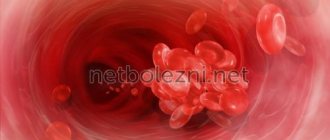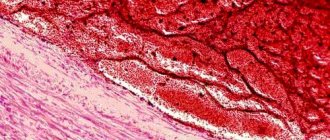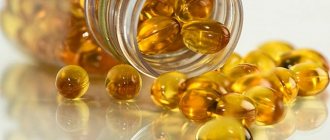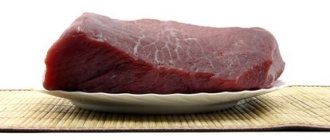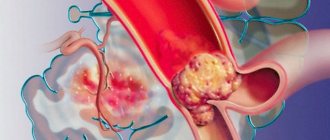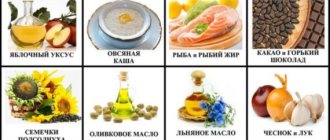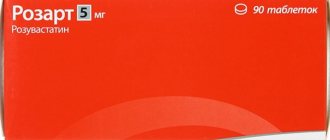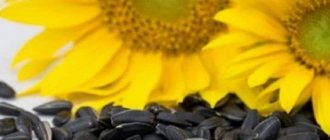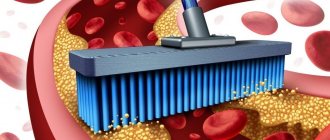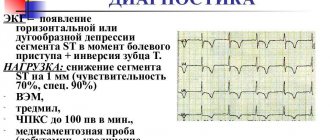Blood clot prevention: an alternative to aspirin
What antiplatelet agents besides acetylsalicylic acid will the doctor prescribe and why sometimes one drug is not enough
Atherothrombosis is the main cause of myocardial infarction and one of the main factors in the development of stroke. The risk of atherothrombosis can be reduced with antiplatelet therapy. We talked about prevention with acetylsalicylic acid in the previous article “Blood clots and acetylsalicylic acid.” However, in addition to it, other antiplatelet agents are also used.
Handyman
Let's begin the description of the representatives of the group of antiplatelet agents with dipyridamole (Curantil), which has been used for many decades. The drug blocks the enzyme phosphodiesterase, which breaks down a compound called cyclic AMP (cAMP), thereby causing increased levels of this substance in the blood. At high concentrations, cAMP prevents platelets from sticking together and prevents blood clot formation.
The ability of the drug to reduce the risk of vascular accidents in patients who have suffered vascular ischemia is confirmed by Cochrane data 1. Indications for the use of dipyridamole include the prevention of arterial and venous thrombosis, including after installation of stents and coronary artery bypass grafts.
However, today dipyridamole is not prescribed for the prevention of strokes as part of monotherapy, since it is significantly inferior in activity to modern antiplatelet agents. But it has found quite widespread use as a drug that normalizes blood flow in cases of cerebrovascular accidents, as well as placental insufficiency in pregnant women. In addition, it increases the body's resistance to viral infections - influenza and ARVI - and is used for the prevention and treatment of these diseases.
Modern and famous
Drugs of a potentially new class - P2Y12 receptor inhibitors - have become hope and support for many people who suffer from heart and vascular diseases or have already suffered a heart attack or stroke. These receptors located on the surface of platelets play a central role in platelet activation, their subsequent “clumping” and blood clot formation. Blocking the P2Y12 site can effectively resist thrombosis and thus reduce the risks of cardiovascular accidents.
One of the first drugs in this series of antiplatelet drugs was clopidogrel, which appeared on the market in the late 1990s under the trade name Plavix. Its antiplatelet effect appears just a few hours after taking the first 75-milligram dose (working dosage of the drug), and the drug has its maximum effect after 3-7 days of regular use. If you need to get immediate results, “loading” doses of 300–600 mg are prescribed. In such situations, clopidogrel has a powerful antithrombotic effect just a few hours after administration.
The original clopidogrel, Plavix, is registered in more than 100 countries and is one of the drugs whose annual sales reach several billion dollars 2 . Until the patent expired, Plavix was the world's second-leading seller. Today, dozens of generic clopidogrel are available in pharmacies, which, of course, has greatly increased its availability.
In addition, other drugs from the group of P2Y12 inhibitors have already been registered in the Russian Federation. Prasugrel (trade name Effient), ticagrelor (Brilinta), ticlopidine (Ticlid) are widely used in clinical practice for the prevention of stroke, myocardial infarction and death from vascular disease in patients who have had a stroke or suffer from coronary heart disease or chronic diseases of the lower extremities ( intermittent claudication). The effectiveness of all drugs in this group, without exception, has been confirmed by many clinical studies and cannot be doubted.
It should be noted that the original prasugrel, ticagrelor and ticlopidine, like the original clopidogrel, are quite expensive. However, the vital indications for which they are prescribed and the results they provide make the investment worthwhile.
One drug is good, but two are better
Antiplatelet drugs definitely help reduce the risk of cardiovascular events, but sometimes resistance to the drugs develops and the likelihood of vascular events increases dramatically. Combination therapy, in which several drugs are prescribed at once, helps to overcome resistance.
Most often we are talking about two drugs, this is called double therapy. Increased effectiveness of dual antiplatelet therapy (DAPT) compared to the use of a single drug is achieved due to the influence of drugs with different mechanisms of action on different stages of thrombus formation.
One of the essential components of DAT is always acetylsalicylic acid. Almost all people with coronary heart disease must take it constantly throughout their lives. The second component of the regimen is usually a P2Y12 inhibitor - clopidogrel, prasugrel or ticagrelor. The doctor decides which of the three drugs will be prescribed, based on the individual risk of blood clots and bleeding, the likelihood of which, alas, increases when taking antiplatelet agents.
The duration of dual antiplatelet therapy is also determined in each case. Patients who have had a myocardial infarction may be prescribed a combination of drugs for at least one year. If the risk of bleeding is low, DAPT may be extended. For patients after coronary artery stenting or those with a high risk of bleeding, DAPT is prescribed for at least a month.
Combination drugs that reduce the risk of thrombosis also include combinations of aspirin with dipyridamole (Agrenox) and aspirin with magnesium hydroxide (Cardiomagnyl). They have nothing in common with standard DAPT, which is based on a combination of acetylsalicylic acid + a P2Y12 inhibitor.
The first is approved for secondary prevention of stroke, but it is significantly inferior in activity to combinations with P2Y12 inhibitors. And the drug Cardiomagnyl is aimed at reducing the negative effect of acetylsalicylic acid on the gastric mucosa due to the absorption of hydrochloric acid by magnesium hydroxide. This improves aspirin tolerability, which is important during long-term treatment.
1 De Schryver EL, Algra A, van Gijn J (2007). Algra A, ed. Dipyridamole for preventing stroke and other vascular events in patients with vascular disease. Cochrane Database of Systematic Reviews (2): CD001820.
Prevention
Simple rules will help you avoid blood stagnation and clot formation:
- Compliance with the prescribed diet and diet.
- Weight control.
- Moderate physical activity, daily exercise, walks in the fresh air.
- In the summer, walking barefoot on sand or pebbles is beneficial.
- Drink at least 2 liters of fluid per day.
- Taking medications according to the regimen prescribed by the doctor.
- Prevention of injuries at work and at home.
Thrombosis requires constant monitoring of the condition and regular examinations. The disease has a favorable outcome if you seek help in a timely manner and follow preventive measures.
How to remove the ROOT CAUSE of an atherosclerotic plaque, blood clot, and without a surgeon’s knife or chemicals? CAUSES AND MECHANISMS OF THROMBUS FORMATION
Rudolf Virchow was the first to identify a triad of causes of thrombus formation, which is recognized by pathologists all over the world, and currently this triad is represented by a violation of the integrity of the vascular wall (endothelium), changes in blood flow and an increase in the coagulation properties of blood. The first two reasons can be classified as local causes of thrombosis, the last - as general. Details below.
Violation of the integrity of the endothelium and vascular wall
as the main factor in the genesis of thrombosis, it is of particular importance in arterial and cardiac thrombosis. May occur in the area of atherosclerotic plaques in atherosclerosis, stage 2 hypertension and diabetes mellitus; in case of inflammation of the vascular wall with thrombovasculitis of various nature (systemic, infectious); on valve leaflets and valves in endocarditis. Damage to the endothelium can be caused by a variety of influences - radiation, toxic products of exogenous (components of tobacco smoke) and endogenous (cholesterol, immune complexes, microbial toxins) origin.
Foods that thin the blood and prevent blood clots
Thrombosis has recently become a common problem affecting different age categories of people. Increasingly, blood clots are becoming the cause of death. Thrombosis is provoked by increased blood density, which is why you need to know how to thin the blood.
Hormonal imbalances, excess weight, hereditary predisposition, and poor diet can be the cause, so it is important to know what products thin the blood and prevent the formation of blood clots in order to promptly diversify the diet in the right way.
Mechanism of thrombus formation
A blood clot contains platelets.
If their amount in the blood increases, a blood clot forms in the vein. Subsequently, it is attached tightly to the vascular wall, narrowing the lumen of the vessel. Often, blood clots may contain atherosclerotic plaques, which arise against the background of high cholesterol (observed in people with excess body weight, hypertension).
It is necessary to thin the blood to prevent this phenomenon, which is sometimes triggered by hormonal changes (pregnant women often suffer from a sharply increased platelet count).
The formation of blood clots and blood clots is provoked by activation of platelets, which occurs due to hormonal imbalances in the body, trauma to the vascular walls. Platelets stick together and attach to the walls of blood vessels, forming blood clots and thrombi.
The main factors provoking the development of this pathology include:
- diabetes, hypertension, cancer, heart problems;
- overweight;
- sedentary lifestyle;
- recent surgery on the vessels of the lower extremities;
- hereditary predisposition.
Smoking, excess caffeine and alcohol also provoke pathological changes in vascular walls and valves.
1.Why platelets are our friends
Surely, back in school, your biology teacher persistently told you something about the formed elements of blood. Tense yourself and their names will immediately pop up in your head. Leukocytes, erythrocytes and platelets.
Delve into the depths of your memory, and you will be able to remember that the former act as protectors of the body, the latter distribute oxygen throughout the body. But with the last element the situation is more complicated.
The formulation of its purpose is very vague - it takes part in blood clotting: that is, it forces the bleeding process to stop in time and at the same time not to slow down blood circulation, maintaining the desired consistency.
From left to right: red blood cell. platelet, leukocyte
But sometimes it happens that the viscosity and density of the red liquid is disrupted and because of this, the blood vessels become clogged with clots. These “uninvited” guests significantly impair blood flow and cause discomfort in the places where they are located. And after a while, if you don’t start treating, the vessels completely block and lead to terrible consequences. Let's talk a little about them.
Surely you are familiar with the disease “varicose veins”. Thrombosis can damage the valves in the veins, causing blood to flow backward through the vein, causing it to dilate. According to statistics, every fifth woman has this unpleasant disease. Yes, yes, oddly enough, this disease is inherent specifically in females. I'll explain the reason later.
If we talk about the danger of thrombosis, it is worth mentioning that the greatest danger is posed by a floating thrombus - that is, a blood clot that can break off at any moment. Most often, such blood formations appear in the vessels of the lower extremities.
Narrowing of a blood vessel
Symptoms of thrombosis are not noticeable at first glance: swelling, hardening and inflammation, pain in the veins. If this applies to you, go see a doctor! The phlebologist will prescribe you the proper treatment and explain how to prevent the formation of blood clots in the future.
And if in previous articles I often said that you can get rid of some ailments on your own, here I strongly recommend that you don’t. It may be dangerous. For example, when blood clots “come off,” a person is usually hospitalized and placed on strict bed rest.
In particularly advanced cases, clots are removed surgically. But it is better, as they say, not to lead to sin.
Why is thick blood dangerous?
Thick blood is dangerous primarily because, in the absence of proper therapy, the risk of a blood clot increases several times. Further, against this background, other diseases may develop: thrombophlebitis, thrombosis. In especially severe cases, blood poisoning and inflammation of the venous wall may occur with further spread of the infection throughout the body.
If a blood clot forms, the part of the vessel affected by the formation is usually removed, or the vessel is completely clamped, excluding it from the circulatory system. If the blood clot comes off, then there is a high probability that it will block the pulmonary artery - in this case, death occurs instantly. That is why the removal of a blood clot is a necessary urgent measure, since the condition of a patient with a detached blood clot should be considered urgent.
Most often, if blood clots are just beginning to form or are still at an early stage, then a properly chosen blood thinner will help to quickly and effectively deal with the problem.
Thick blood can provoke increased stress not only on the lower extremities (provokes varicose veins, venous insufficiency, edema), but also on the heart muscle, since pumping thick blood throughout the body is many times more difficult than liquid blood.
Even if a person suffers from increased blood density, absorbable medications and correctly selected products will help solve the problem.
Causes and symptoms of thrombosis
The formation of a defect closing the lumen of the vein depends on several factors:
- increased thrombus formation due to hereditary burden, autoimmune diseases, condition after chemotherapy;
- vascular injury due to surgery, infection, allergic reactions, after pregnancy and childbirth;
- stagnation in the bloodstream when leading a sedentary lifestyle or staying in one position for a long time.
Sometimes the clot can resolve on its own.
Diseases that contribute to the formation of blood clots:
- malignant neoplasms;
- heart diseases;
- diabetes;
- excess weight;
- hormonal disorders;
- pathological processes in the kidneys.
Similar article - Herpes during pregnancy 1st trimester consequences
People over 55 years of age who suffer from obesity, as well as women during pregnancy, are at risk.
There are several forms of the disease:
- Damage to the veins of the lower extremities. The pathological process is complicated by the development of ulcers, gangrene and necrosis. Most often, blood clots affect the femoral vein, resulting in pain in the legs, cramps, and impaired innervation due to blood stagnation. The patient complains of a feeling of fullness, a feeling of heat or cold. Upon examination, dilated superficial veins are visible on the skin.
- Hemorrhoids are a common occurrence in women after difficult childbirth and multiple pregnancies. Signs of the disease are pain, burning sensation and swelling in the anus. There is a high risk of node damage followed by infection and inflammation. If the temperature rises and there is purulent discharge, you must immediately seek help.
- Thrombi of the cavernous sinus. The pathology is accompanied by severe headache, blurred vision, convulsions, impaired consciousness and fever. If you do not seek help in a timely manner, the patient may fall into a coma.
- Lesions of the subclavian vein are a common ailment of people involved in sports. Stagnation of blood provokes a burning sensation, bloating in the arms, and pain after exercise. The correct course of therapy gives a favorable prognosis.
- Retinal thrombus. Caused due to blockage of small vessels in people suffering from hypertension, diabetes and atherosclerosis. Symptoms of the pathology: deterioration of visual acuity, dark spots before the eyes, distorted vision.
Medications
In order to cope with the problem of increased blood density, it is necessary to use an integrated approach:
- proper nutrition, plenty of fluids;
- wearing comfortable shoes and compression garments;
- gymnastics, regular walking;
- antithrombosis tablets and other drugs.
Which medications are best to choose will depend on the underlying cause. It is important to eliminate the provoking factor at the beginning of therapy - without this, not a single chosen tactic will be effective.
In addition, it is necessary to correctly select drugs that dissolve blood clots (or pre-formed blood clots), since drugs of several groups are prescribed simultaneously (in addition to the main anticoagulants). Therefore, it is so important that the drugs are compatible with each other.
Drugs that thin the blood and strengthen the walls of blood vessels include the following basic list of drugs:
- Heparin. Can be purchased as an ointment or injection. This is the basis of all blood thinners;
- Lyoton. Ointment for external use, helps thin the blood, reduce swelling, eliminate discomfort in the legs;
- Fragmin, Clexan, Klivarin - low molecular weight heparins, which are injected subcutaneously into the abdominal wall laterally;
- Lepirudin, Fragmin;
- Warfarin is a popular drug that blocks the enzymatic activity of the liver to produce an increased amount of elements that promote platelet production.
Each drug is prescribed by a doctor after undergoing a comprehensive examination to determine the stage of damage to the vascular system.
Anti-inflammatory drugs for thrombophlebitis
Nonsteroidal anti-inflammatory drugs (NSAIDs) for thrombophlebitis are usually prescribed for the following purposes:
- relieving inflammation in the area of the vein affected by thrombophlebitis;
- pain relief;
- improvement of blood composition and its properties.
In the acute period of thrombophlebitis, to eliminate the inflammatory reaction and pain, it is recommended to administer NSAIDs parenterally, by injection or in the form of rectal suppositories.
Most often, Dikloberl is used for this, which contains diclofenac, and the drug is produced in a form suitable for injection.
When the acute process is stopped, you can stop administering NSAIDs by injection and use tablets.
Preference is given to Ibuprofen, which not only relieves inflammation, but also has a strong analgesic effect.
Ibuprofen is used 2-3 times a day, 200-400 mg
Blood thinners
For those who suffer from thick blood and do not want to use medications, it is important to take into account products that thin the blood and strengthen the walls of blood vessels when creating a menu. At home, it is quite possible to prepare a product that prevents blood clots.
List of the most effective blood thinning products, due to the component content of the composition:
- cherries, sweet cherries, blueberries, cranberries, raspberries. You can eat the berries fresh. Vessels are strengthened by berries containing compote, fruit drink, and juice. Vegetables, fruits and berries are healthy (especially vegetable crops). Statistics: vegetarians practically do not suffer from thrombosis. The menu can contain unlimited fruits and vegetables.
- tomatoes, carrots, cabbage, beets, legumes - these vegetables should form the basis of the diet. Substances that contain vegetables help to cope with the problems of thick blood when used regularly (boiled, stewed, raw, steamed);
- ginger can be grated and added to tea or salad;
- lemons. A common mistake is that vitamin C thickens the blood. On the contrary, products containing the vitamin help quickly dissolve a blood clot (even a formed one);
- oatmeal;
- garlic. The use of garlic is recommended to be limited (for dressing dishes). Use it if there are no serious heart pathologies;
- low-fat fish, fish oil;
- olive, linseed oil.
LiveInternetLiveInternet
Quote from Vedma_ELENA message
Read in full In your quotation book or community!
Treatment of vascular thrombosis with folk remedies
Vascular thrombosis - the mechanism of disease development
● However, the property of platelet aggregation can occur without compromising the integrity of the skin and mucous membranes. This occurs when there is narrowing, inflammation or deformation of the blood vessels and damage to its walls due to the consequences of surgery, taking medications that have side effects; improper nutrition. The number of sticky lumps increases, threatening to completely block the blood flow. Often the resulting thrombus attaches to the cholesterol plaque of the atherosclerotic “conductor”, contributing to the development of atherothrombosis. ● A blood clot attached to the wall of a blood vessel can break off at any time and travel through the body's extensive circulatory system. If the “stray” gets stuck in the coronary arteries of the heart, myocardial infarction or ischemia will occur; if the “renegade” partially or completely blocks the channel in the vein, there will be gangrene of the limb or thrombophlebitis. When a blood clot enters the pulmonary artery, the patient develops severe chest pain, shortness of breath, his blood pressure drops sharply, and his heart rate increases. Such a patient requires emergency hospitalization. Vascular thrombosis - causes of the disease ● The main cause of vascular thrombosis is a blood clotting disorder. Unfortunately, the result of a clinical blood test cannot always clarify the picture of the pathology. Blood viscosity increases if the platelet count is high (the norm is 200-400 thousand per microliter). It affects the rate of clotting and the number of red blood cells (erythrocytes), the norm of which is 4.5-5 million per liter. A reliable indicator of blood viscosity is its rapid (directly in the needle) coagulation when taken from a vein. ● Relatively recently, a new alarming concept has appeared in medical terminology - hypercoagulation syndrome (this is prethrombosis). When such blood is examined in a laboratory, it is about to be ready to transform the clot into a denser lump and form a “plug”. A patient with this blood, when vascular thrombosis begins, feels as if he has served a leg, he has thirst, a dry mouth, and heaviness in the head. Vascular thrombosis - recipes of traditional medicine ● Our ancestors have long struggled with vascular diseases, ancient recipes of traditional medicine have survived to this day. Let's start with the simplest. It is enough to eat 2-3 cloves of garlic every day to reduce cholesterol plaques in the aorta and dissolve the fibrin protein, which is the building block of a blood clot. When consumed regularly, garlic can replace the best medicinal blood thinners. But it cannot be combined with taking the above-mentioned warfarin. ● Horse chestnut is considered to be a fairly strong remedy for reducing blood clotting. In official medicine, it is recommended to use ready-made pharmaceutical drugs for these purposes - vasostasin, venostazin, aescusan, esflazide. At home, patients prefer to take pharmaceutical chestnut tincture, diluting it with 30-40 drops in half a glass of boiled water, in three doses before meals. ● Our grandmothers could at one time prepare horse chestnut tincture instead of the current escusan (100 grams of fruit per liter of vodka, infused in a dark place for three weeks). They also made a water infusion by steaming two tablespoons of nut leaves with a glass of boiling water. They stood for one hour, then took a tablespoon five times a day. Tincture and infusion have been successfully used for rubbing. ● The ointment was prepared by mixing nuts with butter or goose fat (1:2 ratio) and keeping in the oven. ● It was also popular to take two glasses of medicinal chestnut kvass per month (for 2-2.5 liters of boiled water - 20-25 nuts, a glass of sour cream and sugar). The drink will be ready after two weeks of fermentation in a warm, dark place. ● From time immemorial until today, the berries of viburnum, sea buckthorn, blueberries, cranberries, and serviceberries improve the quality of blood. ● Natural blood thinners include the following medicinal plants: coltsfoot, meadowsweet, astragalus, comfrey, raspberry leaves, etc. Using the example of sweet clover, brew a tablespoon of the raw material in half a liter of boiling water and let it cool. The infusion thins the blood and strengthens blood vessels; it should be taken half a glass three times a day. ● The following medicinal herbs improve blood flow: birch buds, linden leaves and inflorescences, licorice, hawthorn, dill, cinquefoil, valerian, rose hips, Japanese sophora. ● Brew two tablespoons of a mixture of cherry, raspberry and black currant leaves (taken equally) with two glasses of boiling water and drink with honey after 40 minutes. ● Drink ginger tea. Leave a piece of grated white root in a glass of boiling water under the lid for 20 minutes, cool and add honey and lemon. You can also add cinnamon.
There is one simple folk remedy for blood clots. To prepare it, mix the following alcohol tinctures in the indicated doses:
- 125 ml each: motherwort, evasive peony, hawthorn berries and valerian;
- 40 ml each: eucalyptus and peppermint tops.
- 10 ml of Corvalol and Echinacea.
Add 8 powdered clove buds (seasoning) to the tincture mixture. Shake everything and leave for a week in a dark place. Take the tincture three times a day. Single dose: teaspoon diluted with 10 ml of water.
Source: https://narodnymisredstvami.ru/narodnyie-sredstva-p...oz-netraditsionnoy-meditsinoy/
PREVENTION AND TREATMENT!
If you have thrombophlebitis and varicose veins, you should sleep with your legs elevated. In the morning after sleep, you need to do simple gymnastics: raise your legs, make 6 - 8 swing movements up and down and in a horizontal plane in the form of scissors, then hold your legs at a right angle and, without lowering your legs, pull on an elastic stocking or fix your leg with a bandage. It is useless to do this with lowered legs, since the venous valves lower.
Inflammation of the veins can be treated by rubbing the area at night and in the morning with apple cider vinegar. It is believed that within a month the compression of the veins will begin.
A simple physical exercise: rise on your toes so that your heels lift off the floor by 1 cm, and sharply lower yourself to the floor. After 20 such concussions, take a break of 10 seconds. Repeat this procedure twice more. During the day, find an opportunity to dance like this 3-5 times.
It is imperative to supplement this treatment with an infusion of medicinal herbs: clover, its flowering heads, sweet clover herb. Brew 1 tbsp in a teapot. per glass of boiling water and drink at least 2 times a day.
A decoction of carrot tops should be drunk instead of tea or water.
Willow or aspen bark is used for foot baths. 2 tablespoons of bark are poured into 2 cups of boiling water and boiled for 15 minutes. The duration of the baths is up to 1/2 hour.
Tincture of fly agaric mushroom caps 1:1 is taken 25 - 30 drops per day per 1/2 tbsp. water or tea to relieve sclerosis and vasospasm.
Where it hurts, apply cottage cheese or clay and massage the heels of your sore feet daily.
Comfrey roots are used as an ointment for easy rubbing. The ointment is prepared by mixing pork fat or goose fat with comfrey powder when heated in a 1:1 ratio.
Fresh ground wormwood herb is mixed 1:1 with yogurt and applied in the form of compresses to the legs, where the veins are very swollen.
Mix ground fern leaves 1:1 with sour milk and apply as a compress to areas with dilated veins. Treatment is carried out for 3 - 4 days. The same number of days break, then repeat.
Rub the leaves and flowers of common tartar, burdock, coltsfoot and use for compresses at night for 40 minutes.
Before each meal, drink a glass of water with 2 teaspoons of apple cider vinegar. In addition, vinegar is applied to the entire length of the affected areas of the legs for a month.
Prepare an infusion of 2 - 3 tablespoons of the following mixture: sweet clover herb - 2 parts, comfrey root - 2 parts, chamomile flowers - 1.5 parts. Infuse with a glass of boiling water for 2 hours and use as a compress.
Prepare an infusion of 2 - 3 tablespoons of marshmallow root, elecampane root, calendula inflorescences, comfrey root, chamomile inflorescences and tartar flowers in equal parts and prepare compresses.
Pour 20 g of dry crushed calamus rhizomes into 0.5 liters of homemade apple wine, leave for 2 weeks and drink 2 tablespoons 3 times a day before meals.
100 g of dry flowering tops of white sweet clover, pour 1 liter of vodka, leave for 3 weeks, take 15 - 20 drops with water, 3 times a day before meals.
Pour 50 g of nutmeg powder into 0.5 liters of vodka and leave for 8 - 10 days. Take a teaspoon 3 times a day before meals. /7guru/
Ripe tomatoes are cut into slices and applied to the dilated veins, after 3 - 4 hours the slices are replaced with fresh ones.
A folk remedy for treating thrombophlebitis is the use of crushed male fern leaves, mixing a tablespoon of gruel with the same amount of sour milk, applying a thin layer to gauze, which is then applied to the affected areas. Treatment is carried out for 5 days, then a break is taken for the same number of days and repeated.
An old way to prevent varicose veins is to massage the legs from the foot up to the knee by rolling a wax candle, lightly pressing it on the skin. It is better to do this by first placing one and then the other leg on the chair.
It is useful in the morning, during the morning toilet, to pour cool water over your feet up to the ankles, preferably a cold and strong stream, alternating with hot water for 20 seconds.
Treatment of thrombophlebitis with a folk remedy using mumiyo
Mumiyo has an anticoagulant and vasodilator effect.
Reduces blood clotting.
Extends the time of recalcification of oxalate plasma.
Reduces plasma tolerance to heparin.
Extends heparin and thrombin time.
Treatment regimen for thrombophlebitis using mumiyo: dissolve 8 g of mumiyo in 0.5 l. boiled water and drink 1 tbsp for 10 days. spoon on an empty stomach, repeat the course after 5 days. It is necessary to conduct 3-4 courses. Lubricate sore areas with ointment (20% solution of mumiyo in peach oil or Vaseline).
● For one hour, brew 20 g of meadow clover inflorescences with a glass of boiling water and drink half a glass three times a day.
1. Hazelnut, leaves, bark.
Infusion of leaves and bark of hazel (hazelnut).
1 tablespoon of crushed raw materials per glass of boiling water.
It is recommended to drink 1/3 - 1/4 cup 3-4 times a day for varix veins, perifleuritis, trophic leg ulcers and capillary hemorrharia.
Take a decoction of the leaves for hypertrophy (enlargement) of the prostate gland.
2. Tincture. 50 gr. flowers or chestnut fruits per 0.5 liter of vodka 50 degrees.
Leave for 2 weeks in a warm, dark place, shaking daily.
Take this tincture 30-40 drops 3-4 times a day for 3-4 weeks.
To treat varicose veins and hemorrhoids in folk medicine, in addition to tincture, sometimes use fresh juice from chestnut flowers, 25 drops 2-3 times a day.
Horse chestnut preparations reduce blood clotting, strengthen the walls of capillaries and veins, prevent the formation and promote the resorption of blood clots in blood vessels.
Preparations from chestnut (fruit, flowers or bark) are used internally and externally for hemorrhoids and vascular spasms.
Impaired secretion of bile, chronic digestive disorders, bronchial catarrh, gout, rheumatism, sciatica and for the treatment of thrombophlebitis, leg ulcers and varicose veins.
The extract is also recommended for use in baths for miralgia and neuralgia.
Hot infusion and extract from horse chestnut is one of the best venototic remedies.
Included in domestic and imported drugs for the treatment of dilated and inflamed veins, phlebitis and hemorrhoids.
3. Before going to bed, take warm foot baths from sushitsa grass. Helps with thrombophlebitis and other thromboses. Shared sushi baths are just as beneficial.
4. A woman could not walk after having her gallbladder removed.
My legs began to swell and became covered with a network of blue thin veins.
I made an infusion of fresh Kalanchoe leaves (Goethe color) with vodka. I started rubbing my feet. The tumor is gone. The blueness of small veins disappeared, and I began to walk normally.
5. Yarrow herb - 50 g; Immortelle flowers - 200 gr.; Lingonberry leaves - 100 gr.; Buckthorn bark - 100 gr.; Birch leaves - 100 gr. Brew 1 full tablespoon of the crushed mixture into 300 g. boiling water
Boil for 5 minutes. Leave in a warm place for 4 hours.
Take warm, 1/2 cup 3 times a day, 15-20 minutes before meals. Used for phlebitis and thrombophlebitis.
6. Exercise proposed by Academician A. A. Mizin for thrombophlebitis:
Rise on your toes so that your heels come off the floor just one centimeter, and suddenly lower yourself to the floor.
After 30 such shocks, a break of 10 seconds. Do no more than 60 shakes for each exercise.
During the day, it is recommended to repeat the exercises 3-5 times for one minute each. Do it calmly and without haste.
Bulgarian recipes for varicose veins:
7. Thoroughly grind the freshly picked leaves and flower heads of silver wormwood in a mortar.
Combine a tablespoon of the resulting powder with the same amount of sour milk, mix well and apply to gauze in an even layer, then apply gauze to areas with dilated veins.
Treatment is carried out for 3-4 days. After a few days you can repeat it.
8. Crush the ground part of a freshly picked male fern (Dryopteris filix-mas).
Mix a tablespoon of powder with the same amount of sour milk. Then proceed as with wormwood.
9. In addition to medicinal herbs, you can use a well-ripened tomato to treat varicose veins.
Cut it into slices and apply them to the dilated veins. After 3-4 hours, replace the slices with fresh ones. These 3 recipes can be used sequentially one after another, especially in severe cases.
10. For pain in the legs of people suffering from varicose veins, use warm foot baths (up to the knee) from a decoction of oak bark, lasting half an hour. After the bath, put a bandage or rubber elastic stockings on your feet and rest.
11. Hops, cones.
For thrombophlebitis, only greenish-yellow hop cones are collected and dried.
Brew at the rate of 1-2 tablespoons (depending on the patient’s weight) per glass of boiling water.
Boil over low heat for 10-15 minutes, strain.
The entire dose is drunk in two or three doses during the day, preferably in the evening, since during the daytime, when treated with hop cones, its calming and even hypnotic effect is manifested.
"Attention! Eliminate green tea from your diet, which contains a lot of vitamin K, which promotes thrombosis.” Be healthy!
Folk remedies
It is worth considering what folk remedies will help overcome the problem of excessively thick blood. Herbal plants that dilate blood vessels with their constituent components,
Sometimes medications can solve the problem better.
Herbs that thin the blood and strengthen the walls of blood vessels:
- sage;
- mint;
- Melissa;
- motherwort.
The herb can be used to prepare alcohol tinctures (taken three times a day, infused for a week). It is often recommended to use for preparing tea drinks - a tablespoon, a glass of boiling water.
It is important to know the list of which herbs thin the blood at the early stage of thrombosis - sometimes it is enough to overcome the disease. Late stages require herbs for the heart and blood vessels as auxiliary therapy (in a complex: herbs, proper nutrition, medications).
In case of thrombosis, the interconnectedness of all body systems should be taken into account, so the diet should also be balanced. The diet includes not just foods that thin the blood - you also need to control your body mass index to avoid obesity. Excess weight provokes congestion and the formation of blood clots.
How to cure thrombosis with baths?
It is useful to combine treatment of thrombophlebitis of the lower extremities with folk remedies with baths, which effectively eliminate swelling of soft tissues, relieve pain and improve the general condition of the patient. Blood clots in the legs disappear if you steam your lower limbs every day in a decoction of tannic root, boiled for an hour over low heat. Tannic root can be replaced with oak or willow bark. It is better to pour the finished solution not into a shallow basin, but into a bucket, so that the liquid level reaches almost to the knees. To enhance the therapeutic effect after the procedure, you need to wrap your legs with an elastic bandage and take a lying position.
Medicine for blood clots in blood vessels
The medicine prescribed by doctors for thrombosis varies depending on the stage of the disease. All groups of medications act according to different mechanisms and pursue a specific result. Agents that prevent platelet aggregation, blood coagulation, and destroy existing blockages are used in a therapeutic clinic and in emergency care. If a person has had a stroke, heart attack, pulmonary embolism or thrombosis of the vessels of the extremities, loading doses of drugs are used. Medicines help prevent blockages in patients prone to blood clots.
Indications for drug treatment
- Stroke. Acute cerebrovascular accident harms the central nervous system. Blood clot medications are used to dissolve the blockage that led to this condition.
- Heart attack. If thrombus formation occurs inside the coronary vessels that supply the heart muscle, the latter becomes partially necrotic and the organ loses its pumping function.
- TELA. Pulmonary embolism occurs when an embolus formed in other parts of the body travels through the systemic circulation to the lungs. There is swelling and a decrease in respiratory function.
- Thrombophlebitis. This pathology is accompanied by the formation of blood clots and inflammation of the venous walls.
- Retinal vascular thrombosis. If this process is not prevented in time, the nerve cells die and the patient loses vision.
Return to contents
Classification of drugs for thrombosis
Medicines are divided into the following groups:
Antiplatelet agents prevent platelets from sticking together.
- Antiplatelet agents. The mechanism of action of these drugs is to inhibit platelet aggregation.
- Anticoagulants. Inhibitors of fibrin filament formation prevent platelets from binding into a cohesive clot.
- Thrombolytics. These medications dissolve already formed thrombotic masses.
- Phlebotonics. Medicines that protect the venous system and help improve blood flow from the veins.
Return to contents
Phlebotonics for venous walls
Thrombosis is not treated with these medications. They serve to prevent thrombotic complications and protect venous walls. This is the best remedy for increasing blood flow from the lower extremities. The principles of action of phlebotonics are to influence microcirculation and contraction of vascular walls. Thanks to this property, it is possible to treat chronic venous insufficiency. Phlebotonics, as a means of preventing thrombosis, help to avoid surgical interventions on the venous plexuses. The most commonly prescribed medication, Curantil, relieves spasm of the smooth muscles of the vascular walls.
Phlebotonics have a fairly mild effect on the body. However, "Curantil" and its taxes should be taken with caution by people predisposed to bleeding.
Thrombolytics for thrombus formation
This medicine for blood clots in blood vessels affects the conversion of the inactivated substance plasminogen into fibrinolysin. The latter holds platelets together, resulting in the formation of a thrombotic mass. Thrombolytics inhibit its production to dissolve blood clots. But the administration of medications should begin no later than 6 hours after thrombosis. Medicines are divided into the following classes:
| Group | Representatives | Mechanism of action |
| Thromboxane synthesis inhibitors | "Acetylsalicylic acid" | Blocks cyclooxygenase, an enzyme found in platelet cells |
| Prostacyclin stimulants | "Epoprostenol" | Reduces the rate of platelet aggregation |
| Glycoprotein receptor blockers | "Tirofiban" | |
| Adenosine triphosphate purine receptor antagonists | "Ticlopidine" | |
| "Clopidogrl" | ||
| Inhibitors of adenosine deaminase and phosphodiesterase enzymes | "Dipyridamole" | |
| "Pentoxifylline" |
Return to contents
Other medicines
Pharmaceutical products that are not included in any of the groups are phytotherapeutic products. These include tinctures of acacia, chestnut inflorescences, knotweed, motherwort, larkspur, and hawthorn. They also help with thrombophlebitis in the legs, but are not the drugs of choice in acute conditions. Herbal medicines should be taken to prevent thrombophlebitis, after consulting with your doctor. It is advisable to combine the use of these products with multivitamins.
Phlebotonics
Phlebotonics are medications for thrombophlebitis of the lower extremities that can increase blood flow in the veins.
These drugs manage to increase venous blood flow due to the fact that they act on several links that provide microcirculation in the legs. Some drugs in this group can directly affect venous contractions.
In addition to improving venous blood circulation, phlebotonic tablets stimulate the outflow of lymph from the affected limbs and reduce inflammatory reactions.
Thanks to drugs in this group, the frequency of surgical interventions for chronic venous insufficiency is reduced.
Therapeutic effect
Medicines in this group have the following properties:
- stimulate circulation processes in the lower extremities, preventing blood from stagnating;
- increase the activity of blood vessels, affect their tone;
- stimulate the processes of lymph outflow from the affected limbs;
- stop inflammation processes in the vascular walls;
- improve elasticity, increasing the resistance of blood vessels to stretching and damage;
- thin the blood, preventing thrombus formation;
- prevent the development of chronic venous insufficiency.
Using these medications, doctors try to achieve the following intermediate treatment goals:
- eliminating inflammation processes;
- preventing complications;
- eliminating the destructive effects on surrounding tissues;
- proper preparation for surgical interventions;
- preventing complications after operations.
Contraindications
In some cases, despite their effectiveness, the use of phlebotonics is strictly prohibited. Also, contraindications for this group of drugs may vary depending on what form is intended to be used. Ointments and tablets do not always have similar contraindications.
Phlebotonics cannot be used in the following cases:
- there is any acute gastrointestinal disease;
- the person is sick with gastritis and is in a period of exacerbation of the pathology;
- there is an individual intolerance to any components of the drug;
- intolerance to rutosides;
- the person suffers from kidney failure;
- A pregnant woman whose childbearing process is difficult is in need of treatment.
Phlebotonics are also used with caution for heart pathologies, tumor processes in the body, and infections.
If you regularly take these medications, you are allowed to drive, since these medications have no effect on the neuropsychic sphere and do not affect the speed of reactions.
Ointments and gels usually have a smaller range of contraindications compared to tablets. There are no established contraindications in pediatrics, but due to the age limit for thrombophlebitis, they are used very rarely to treat children.
List of drugs
Today, there are many phlebotonics that are similar in properties and scope of application.
These include:
| Detralex | It has virtually no contraindications and is widely prescribed to pregnant and lactating women. |
| Antistax | Tablets, in the manufacture of which red grape leaves are used, not only tones the blood vessels, but also improves their permeability. |
| Troxevasin | It is widely known to people suffering from chronic venous insufficiency, but its use is not advisable during pregnancy and lactation, and it is not prescribed to children; it is available in the form of tablets and gel. |
| Troxerutin | Used mainly to combat lymph stagnation. |
| Aescusan | Acts as a means for the prevention of varicose veins, has proven itself well in this area. |
What foods will help dissolve a blood clot and improve blood quality?
If you have problems with blood, then this clearly indicates the presence of health problems. And subsequently problems with blood vessels will begin, the formation of blood clots, which can even lead to strokes. In general, blood is very important. It is influenced by our entire lifestyle: mobility, diet. There is good news: with the help of special products you can improve blood clotting or, conversely, worsen it and protect against thrombosis.
Blood thinners
Thick blood is a very dangerous phenomenon. The risk of thrombosis increases and the likelihood of varicose veins increases. The work of blood vessels is difficult; blood clots can block small vessels, slow down the supply of oxygen to various organs, and increase the risk of stroke. Therefore, if you suspect or know that you have viscous blood, you should first consult a doctor. And after that, reconsider your diet. And include in it products that help thin the blood.
Water.
We consist of 70-80% water, and blood simply needs a normal water balance in our body. Therefore, at the first signs of varicose veins and other blood problems, you need to think about whether you are drinking enough water. 1.5-2 liters per day is the average norm; if your weight is high enough, you may need a higher norm. In any case, the body needs a lot of water, based on 30 ml of water per kilogram of weight per day.
Raspberries.
Raspberries contain the same substance as aspirin, which is often taken to lower blood viscosity. But only aspirin has side effects; it negatively affects the stomach and mucous membranes, but raspberries do not. So eat fresh raspberries, raspberry jam. Traditional medicine also recommends a decoction of raspberry and black currant leaves.
Linseed oil.
It contains many polyunsaturated fatty acids needed by blood vessels, as well as vitamin E. It has the ability to restore the elasticity of blood vessels.
Fatty fish.
A source of healthy fats and a fighter against atherosclerotic plaques.
Garlic.
A powerful antioxidant, has an anti-inflammatory effect, promotes the resorption of blood clots. It is recommended to consume it fresh, slightly dried in the fresh air.
Sea kale.
Products containing iodine are very beneficial for the blood. They reduce blood viscosity and increase vascular tone. So all seafood is the first candidate for the table.
Tomatoes.
The lycopene they contain helps normalize cholesterol levels. And rutin strengthens the walls of blood vessels.
Persimmon.
It contains many antioxidants, and thanks to the presence of flavonoids, persimmon thins the blood, prevents the formation of blood clots, strengthens blood vessels and normalizes cholesterol levels in the blood.
Red cabbage.
In principle, any cabbage is useful, including sauerkraut, but red cabbage contains a lot of potassium, which is very beneficial for blood vessels, vitamins C and group B. Therefore, cabbage stimulates metabolism, improves blood quality, and prevents the formation of blood clots.
Citrus.
They contain vitamin C and a lot of liquid. Lemon is especially good at thinning the blood. So tea with lemon and a spoon of honey is a great idea.
Honey.
It has a very good effect on the blood, including thinning it. Prevents thrombus formation.
Sprouted wheat.
Excellent blood thinner if you eat at least 1 tbsp. in a day. It’s a good idea to add it to salads and sprinkle them with flaxseed oil.
Ginger, cinnamon, turmeric.
The bark and roots contain coumarins. These compounds thin the blood and prevent the formation of clots. They are also contained in plants from our region: horseradish root, alfalfa, angelica, celery.
Treatment of thrombosis with medications
Medicine states that most cases of thrombophlebitis begin in the lower extremities. There are quite a lot of variations in the treatment of thrombophlebitis known.
It should be noted that among such diversity, drug therapy is a fundamental component of the course of treatment.
The decision to prescribe medications rests with the specialist. The patient, in turn, needs to be aware of the information flow about known drugs used in the treatment of thrombophlebitis, as well as the dosage and methods of using medications. Let's look at drugs for treating blood clots, including tablets for thrombosis of the lower extremities.
Veins are quite elastic in their structure and have the ability to independently change their diameter in the mode of contraction and relaxation. A group of drugs that stimulate this function are called phlebotonics. Venotonic agents stabilize the tone of the vascular wall and increase blood circulation.
Venotonics
Brief description of tablets of the clinical group of venotonics based on the instructions:
- "Diosmin." Treatment of venous insufficiency is not complete without the use of this drug. "Diosmin" is very popular in the treatment of illness. According to the instructions, it becomes known that the drug has venoprotective, angioprotective and venotonic effects. The use of the drug ensures the elimination of clinical signs of chronic venous insufficiency, helps reduce the level of distensibility of the vein walls, reduces venous stasis, strengthens the tissues of the vascular walls, and also helps stabilize the functioning of capillary vessels. By improving capillary blood flow, the permeability and fragility of tissue walls is reduced, and the microcirculation of lymphatic vessels is normalized. Taking the drug requires compliance with the dosage prescribed by the doctor.
- “Vazobral.” The effect of the drug on the site of thrombosis formation is due to its pharmacological prescription composition. Alpha-dihydroergocryptine regulates the function of central dopamine receptors, improves the metabolic cycle of the brain, and reduces the adhesion of blood cells. Caffeine activates the functioning of parts of the central nervous system. This interaction, due to the improvement of capillary blood flow, ensures an increase in the level of muscle activity to perform physical and intellectual work. "Vasobral" is indicated in the treatment of chronic venous insufficiency. These instructions do not contain information about clinical cases of taking Vazobral during pregnancy, as well as during breastfeeding.
- "Troxevasin". Thanks to the active action of the main constituent substance troxerutin, “Troxevasin” has a complex tonic effect of an anti-inflammatory nature. Troxerutin has a natural origin, its action increases the elasticity of the veins of the lower extremities, capillaries, and lymphatic vessels. By providing an anti-inflammatory effect, the walls of blood vessels become smooth, thereby blocking the possibility of a blood clot attaching, as well as its further degeneration into a dangerous blood clot. The drug is used for venous insufficiency and thrombosis of the veins of the lower extremities. "Troxevasin" is prescribed by a doctor as an independent drug. The drug is not contraindicated for all pregnant women; the leaflet on the use of the tablets contains information about the possibility of prescribing it from the second trimester. During the first 14 days, the dosage of tablets is the same: 300 mg three times a day. Further instructions in the instructions reduce the dosage to 600 mg per day. The doctor determines the duration of therapy using Troxevasin independently, taking into account the individual characteristics of the patient. The drug has individual intolerance, there is a possibility of allergic manifestations, nausea, diarrhea, migraines, and stomach upsets. There are exceptional contraindications for taking the drug by women in the first trimester of pregnancy, as well as by people with health conditions such as gastric and duodenal ulcers of various etymologies.
- "Eskuzan." An equally widely known drug for the treatment of thrombosis, containing horse chestnut extract, is Escusan. The natural component of the tablets strengthens the walls of lymphatic vessels, capillaries, and veins. Accordingly, the walls of the vessels become elastic, the movement of blood along the vascular bed is stabilized, and the exudative fluid that contributes to the appearance of edema stops flowing through the damaged areas of the capillaries. Therapy for the treatment of thrombosis does not involve taking Escusan as an independent drug. The procedure for prescribing instructions indicates auxiliary therapy for ailments of venous insufficiency and post-thrombophlebic syndrome. The symptomatic effect of Escusan prevents swelling. The composition of the tablets includes thiamine, which helps normalize metabolic processes inside the veins. The daily dose of medication varies between 5-10 mg. The duration of treatment is determined individually by the attending physician. The instructions for the treatment of thrombosis with Escusan indicate that the drug has contraindications for use in the first trimester of pregnancy, as well as in case of renal failure.
Anticoagulants
Experts consider metabolic disorders and heredity to be integral risk factors for the development of thrombosis.
Antithrombotic drugs of the pharmacological group of anticoagulants prevent the formation of blood clots in blood vessels. An additional therapeutic effect of anticoagulants on a thrombus is to slow down its further formation and activate fibrinolytic dynamics.
Trental
The active ingredient in Trental is pentoxifylline. Pharmacology uses pentoxifylline to suppress the causes of rapid blood clotting. The activity of the substance reduces the level of fibrin fibers, making the walls of red blood cells smooth, even, and solid.
This therapeutic combination of actions helps to thin the blood, destroy blood clots, and restore normal blood flow in the vessels.
Taking the drug involves gradually increasing the dose, taking into account the degree of the disease. In the process of treating thrombosis, diseases associated with low blood pressure are contraindications.
Aspirin
“Aspirin” has many years of practice as part of the complex treatment of venous insufficiency and thrombosis. Acetylsalicylic acid is active as an anticoagulant and anti-inflammatory agent. Penetrating into the body, aspirin is quickly absorbed by tissues and stabilizes blood circulation. The high activity of the drug requires its consumption only by adults. Contraindications include bronchial asthma, childhood, peptic ulcers, pregnancy and breastfeeding, and consumption of other anticoagulant drugs.
Chime
Treatment of thrombosis of the lower extremities and venous insufficiency involves the use of the drug "Curantil". The product serves as a substitute for aspirin in case of intolerance to the patient’s body. The action of "Curantil" is aimed at controlling the level of platelets due to a direct effect on the enzymes that destroy these red blood cells. By restoring blood flow, the action of the tablets promotes the regeneration of damaged vessel walls.
Foods that increase blood clotting
In addition to products that thin the blood, there are those that thicken it and improve clotting. In some cases (with injuries) this is useful. It must be said that in many products the thickening effect is rather weakly expressed and a healthy person who does not have the problem of “thick blood” may not even notice the effect of consuming them. But this does not mean that this effect does not exist.
If you know about problems with blood viscosity, the threat of thrombophlebitis and other unpleasant diseases, you should carefully eat the following foods:
- Buckwheat grain;
- Animal fats: lard, butter, fatty dairy products;
- Innards, especially beef liver, as well as brains, kidneys;
- Bananas;
- Walnuts;
- Rose hip;
- Rowan;
- Green vegetables;
- Nettle;
- Yarrow;
- St. John's wort;
- Oak bark;
- Viburnum bark;
- Corn silk.
All of these foods contain vitamin K, which improves blood clotting.
What to do to cleanse the blood vessels?
If the disease of the heart and blood vessels is at the initial stage, then drug treatment is carried out using drugs that can thin the blood. Blood flow through the arteries and veins will accelerate, and the likelihood of blood clots will decrease in the future.
But the whole difficulty may lie in the fact that such medications will not be able to cope with long-formed blood clots. In this case, the only effective solution is surgery. Immediate intervention must take place if the brain is affected, in which case medical professionals have only a few hours to do so. If a problem occurs in the heart muscle, a maximum of six hours.
Proper nutrition and healthy lifestyle
If blood clots form, it is recommended to adjust your diet, which will help reduce body weight, strengthen the walls of blood vessels and reduce blood viscosity. It is recommended to drink at least 2 liters of liquid, eat as many fruits and vegetables as possible, as well as foods rich in antioxidants and flavonoids (sprouted wheat, fruits, vegetables, berries, seafood, nuts, liver, buckwheat and others). Garlic, onions, cherries, cranberries, ginger and blueberries help thin the blood.
Consumption of animal fats, fatty dairy products, confectionery, coffee, chocolate, alcohol and fast food should be sharply limited.
Compression garments have proven themselves well and are an alternative to constant bandaging with an elastic bandage. This will help get rid of swelling, pain, and also improve the functioning of the veins. However, it is worth remembering that stockings or tights must be strictly sized, and the level of compression must correspond to the stage of the disease. Therefore, a doctor must select it.
Drug and surgical treatment
There are two methods to get rid of thrombosis. This is either surgery or intensive care.
For intensive therapy, drugs are used whose action is aimed at dissolving blood clots. Such substances are called “thrombolytics”. This method is relevant for the treatment of arterial thrombosis. These drugs include streptokinase and urokinase. They are used, for example, in acute myocardial infarction.
In the case of venous thrombosis, treatment is somewhat different and depends on how tightly the thrombus adheres to the vessel wall. If the blood clot is floating, that is, it can easily move in the space of the vessel, it is necessary to ligate the vein, creating a kind of trap into which the blood clot will fall in the future. By using heparin and medications similar in action to it (direct anticoagulants), you can stabilize the blood clot and then get rid of it.
In case of complete closure of a vein by a thrombus, it is necessary to use drugs (indirect coagulants) that have a thrombus-destroying effect. Their use leads to restoration of bleeding and the damaged vessel as a whole. The most popular drug used is warfarin.
To prevent platelets from sticking together, antiplatelet agents are used - acetisalicylic acid.
It is worth remembering that when taking several blood thinning drugs at the same time, the risk of bleeding increases. These drugs should not be used for bleeding disorders, hemorrhagic strokes, cancer, ulcers, during pregnancy, lactation and menstruation.
The operation is indicated in the following cases:
- inflammation began in the area with the blood clot;
- high risk of blood clot rupture;
- the thrombus began to move up the vessels;
- floating thrombus.
Types of surgical interventions: bypass surgery, stenting and removal of the blood clot itself.
In the first case, the surgeon intervenes in the operation of the vessel in such a way that the bloodstream bypasses the vessel damaged by thrombosis. This operation is performed exclusively under anesthesia.
In modern surgery, stenting is more common. The point of the manipulation is to install a stent, similar to a coil spring, in the area of the narrowed vessel. A puncture is made in the artery; no prior anesthesia is required. Before puncturing, it is possible to remove the blood clot by suction, and the operation itself is performed using a special syringe device.
Folk remedies
As in many other cases, traditional medicine is very successful in combating blood clots. Therefore, if you decide to seek treatment using traditional methods, you should use the following tips (however, a mandatory consultation with a doctor is required):
- The use of chestnut tincture to restore damaged blood vessels. To prepare, you will need finely ground chestnuts and half a liter of vodka. Let the resulting mixture stand for about twenty days in a cool, dark room, shaking it periodically to obtain a better quality medicine. Take twenty drops orally twice a day.
- If you have thrombosis of the lower extremities, taking tannic root baths will help cleanse the blood vessels. Take a few grams of crushed root for five liters of clean water. Steam your feet for an hour and a half over low heat. Take a warm bath.
- Oak or willow bark is also suitable for getting rid of blood clots. Based on the above example, take these ingredients and use them as raw materials for your bath. Do not put any weight on your legs after the procedure.
- Herbal mixture of knotweed, hawthorn and horsetail. Mix the ingredients together and pour several glasses of boiling water. Infuse, cool and take in small portions.
You should not self-medicate. When the first signs of thrombosis appear, it is recommended to consult a doctor for advice.
